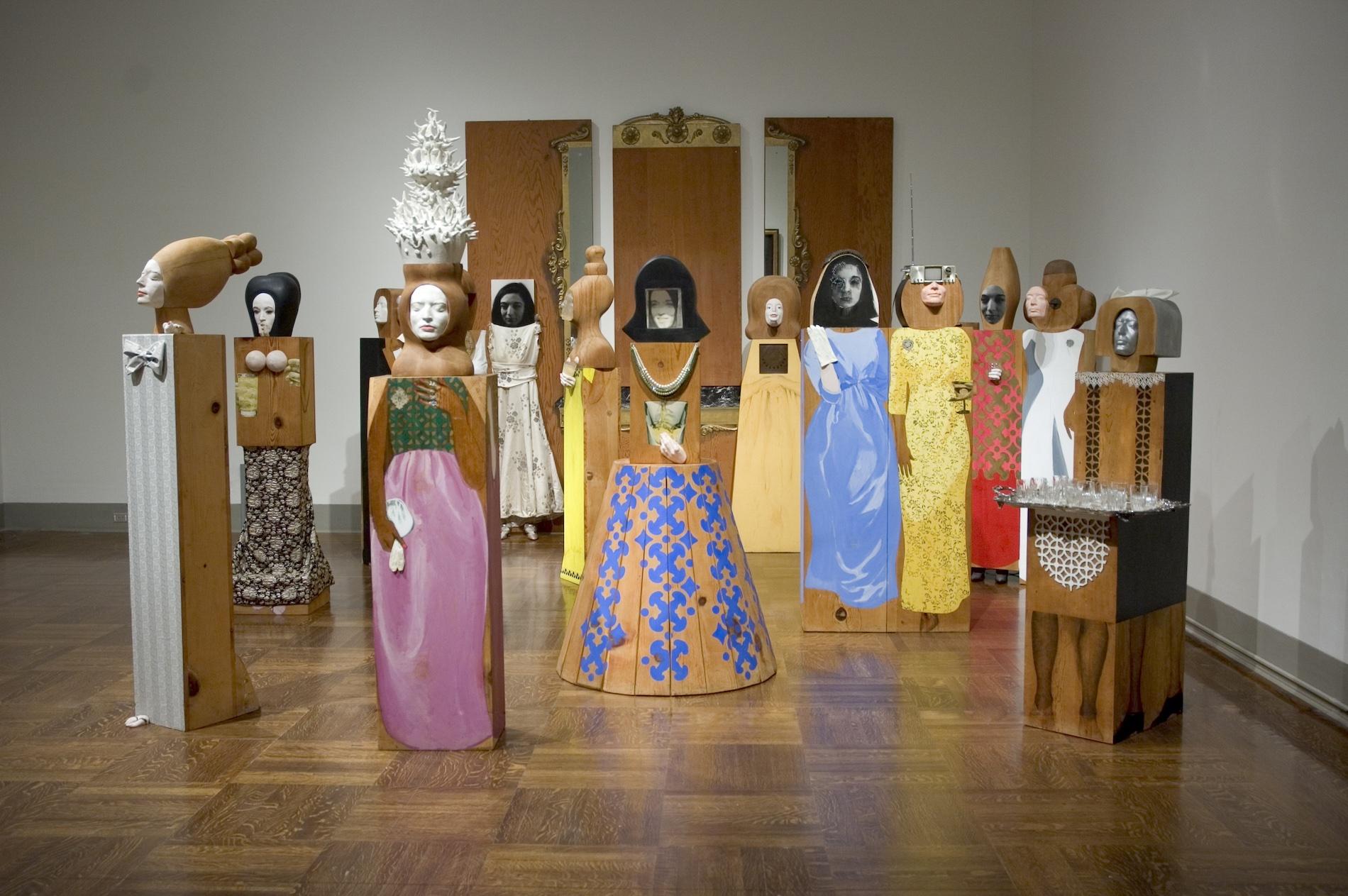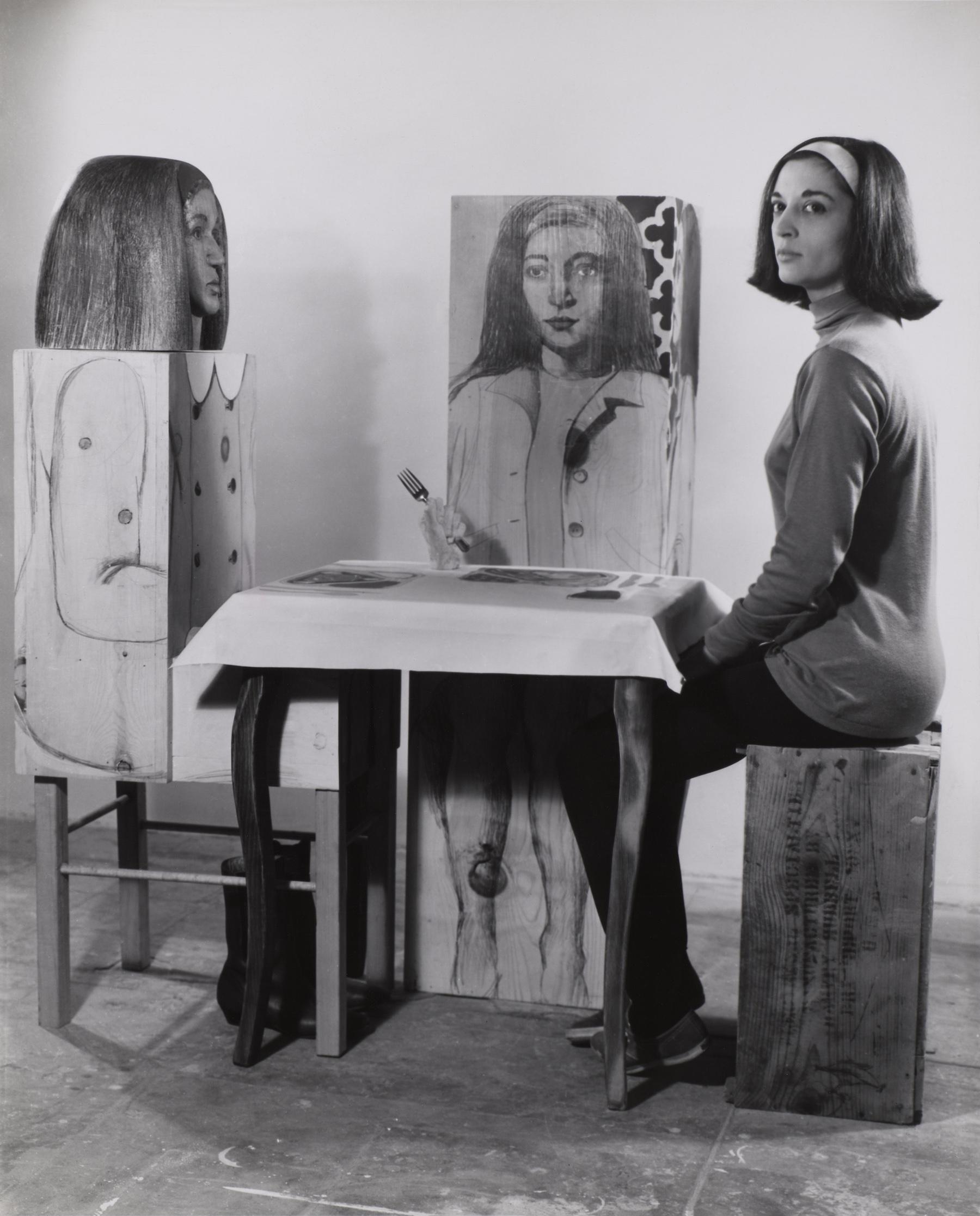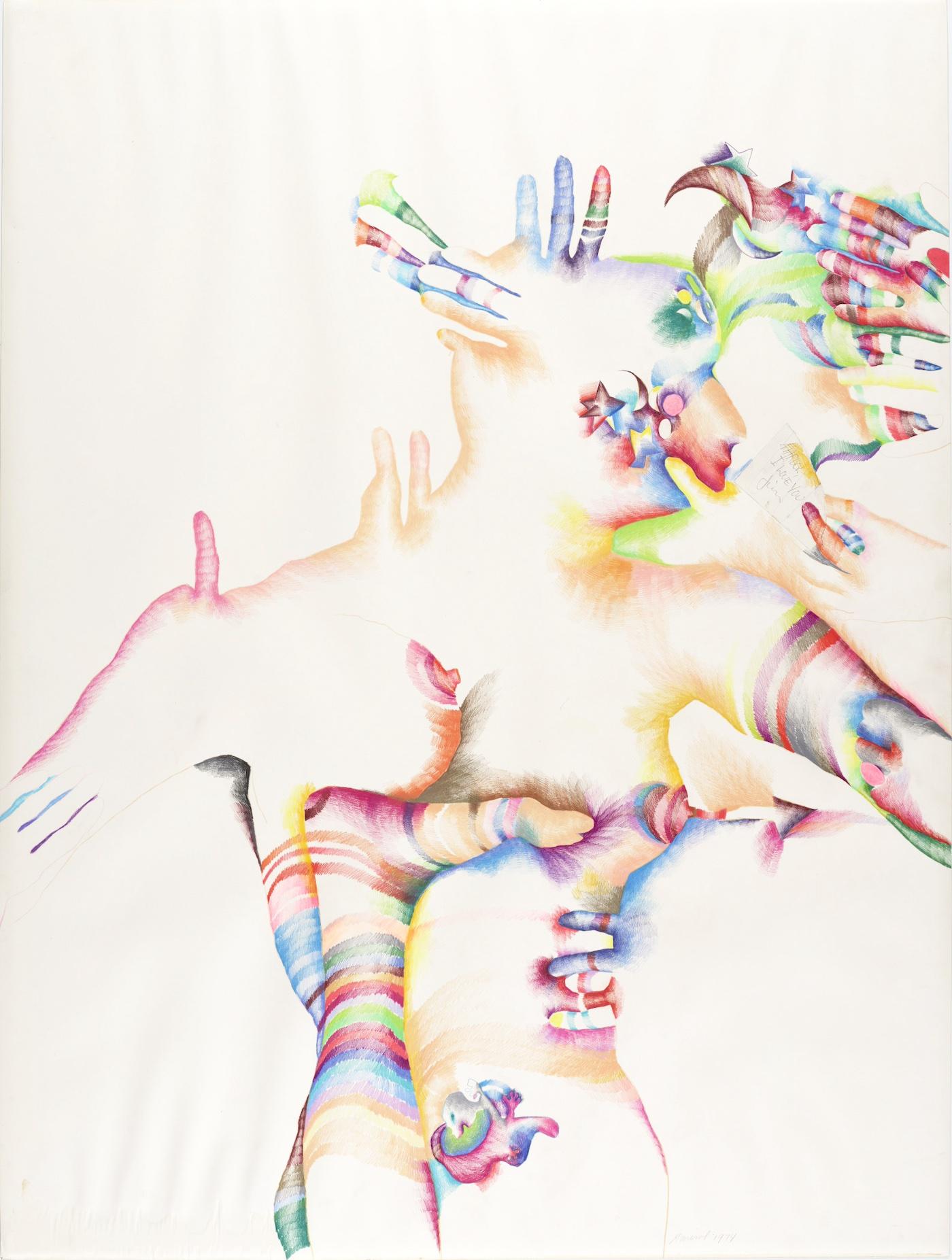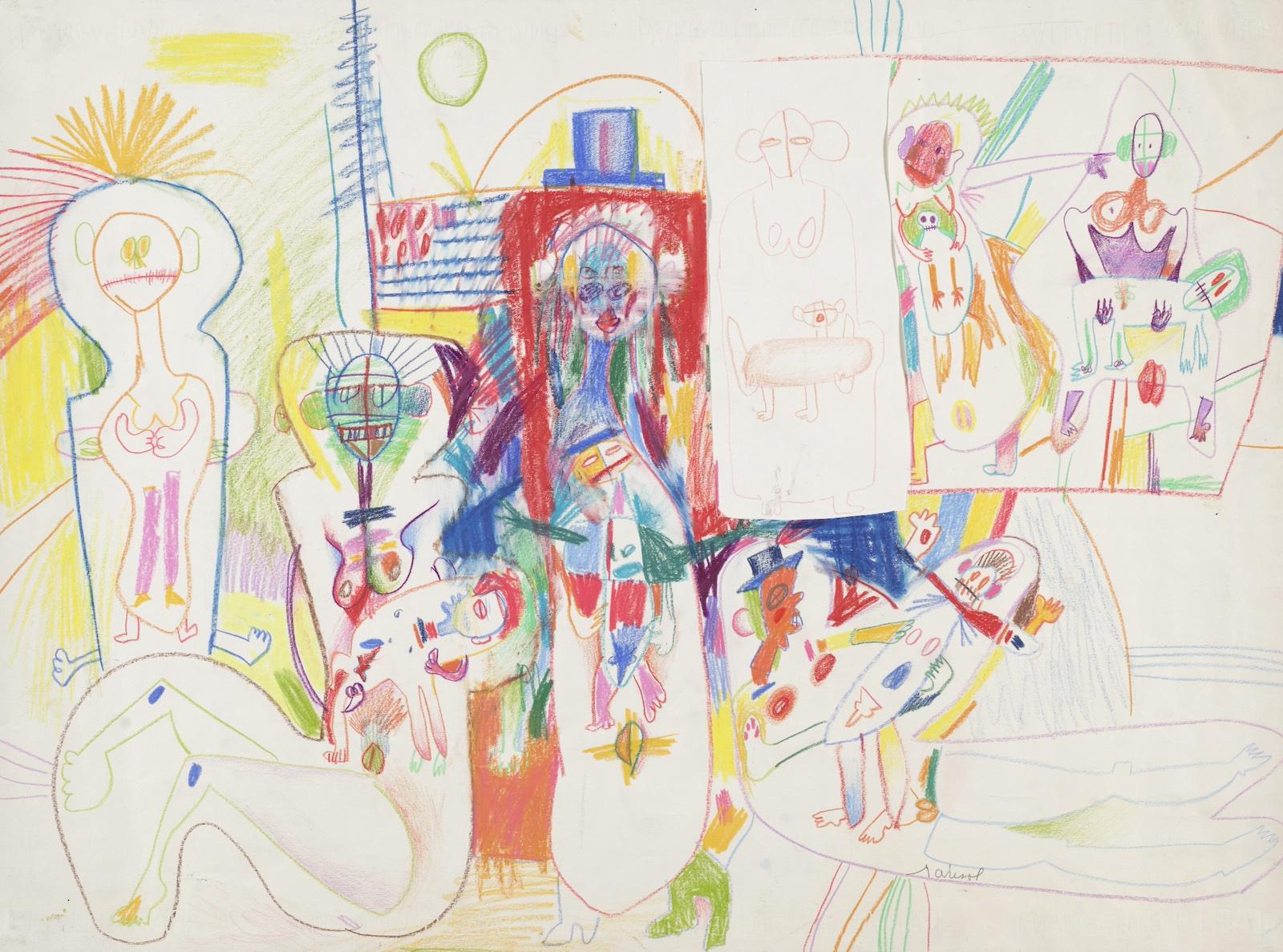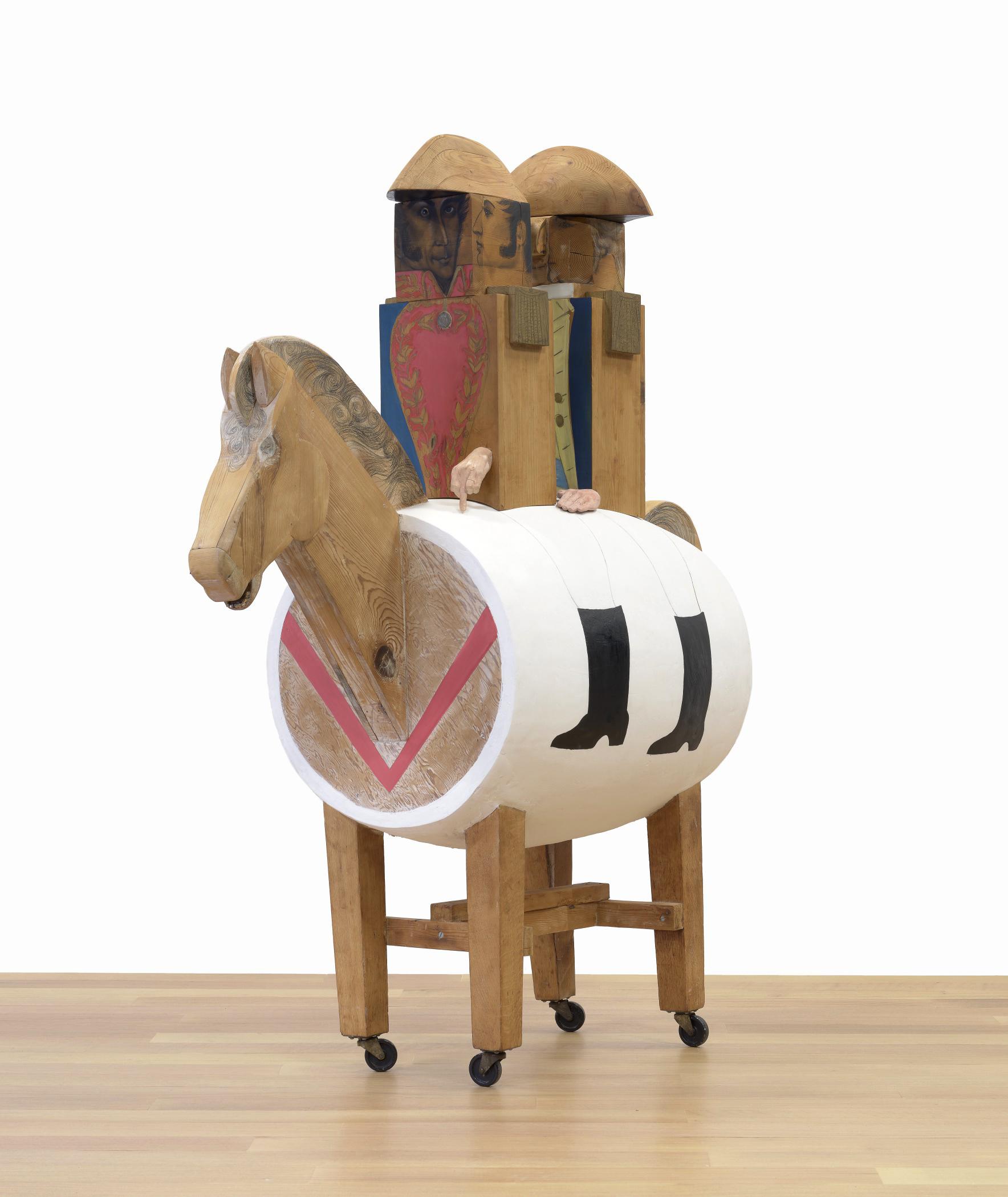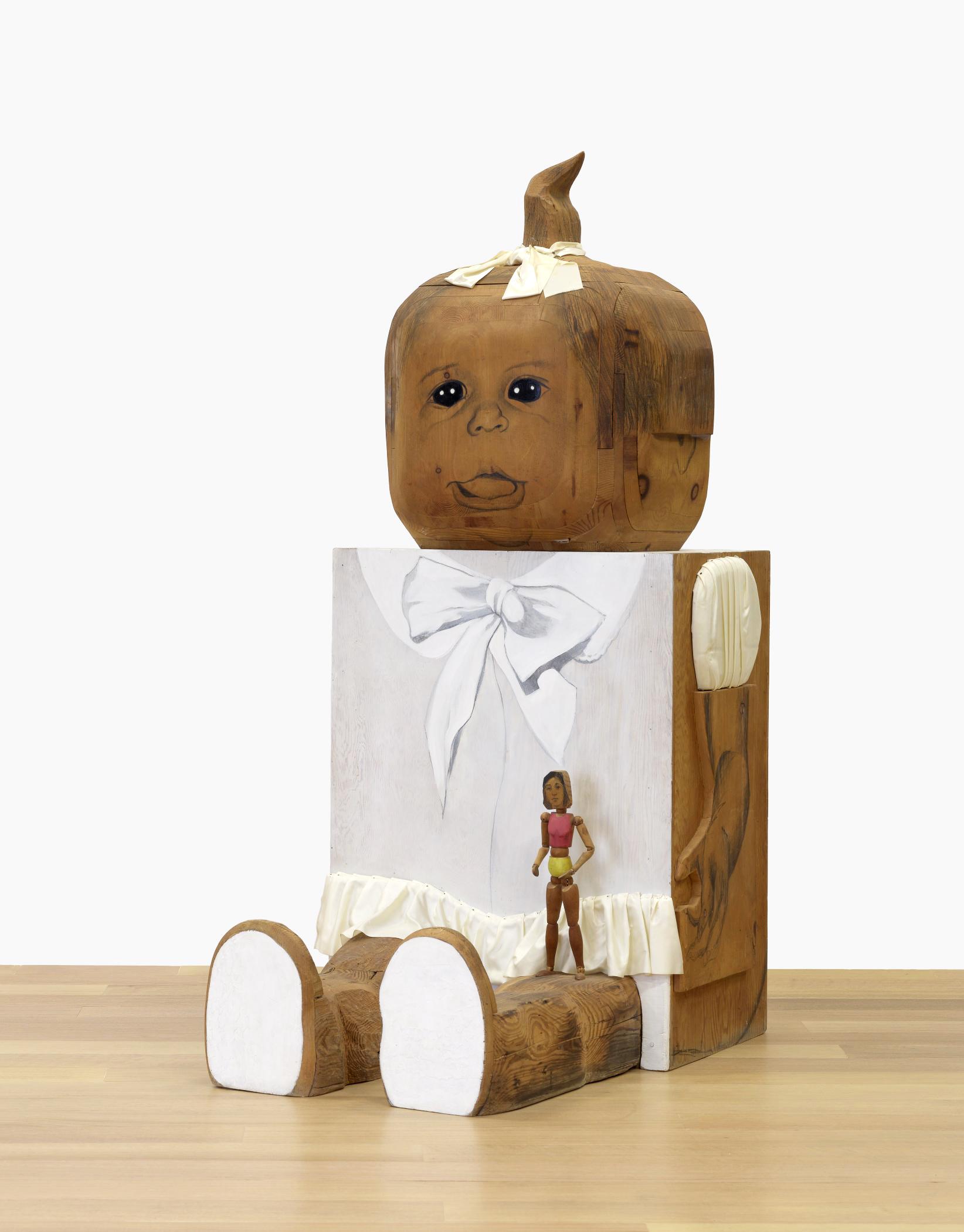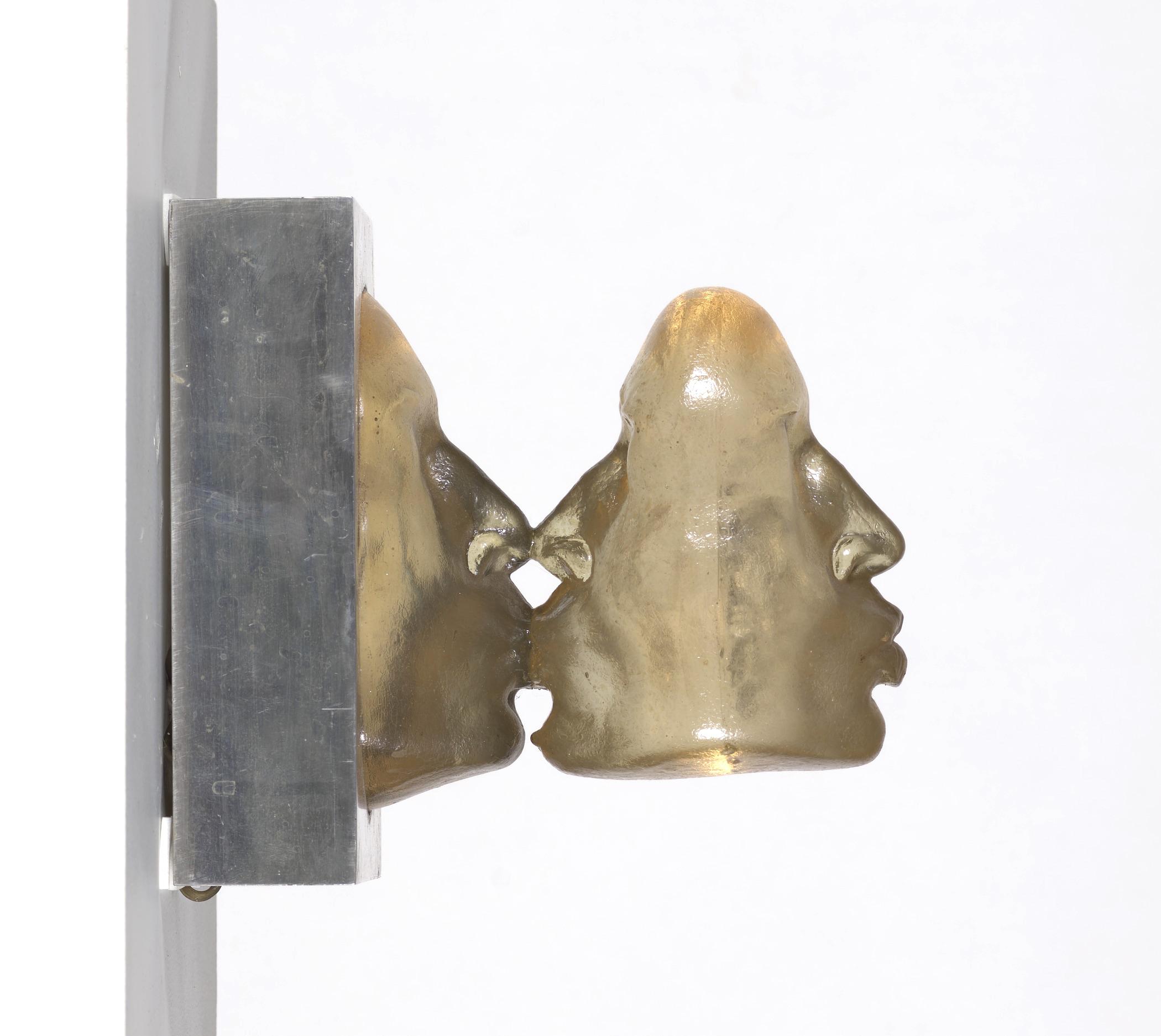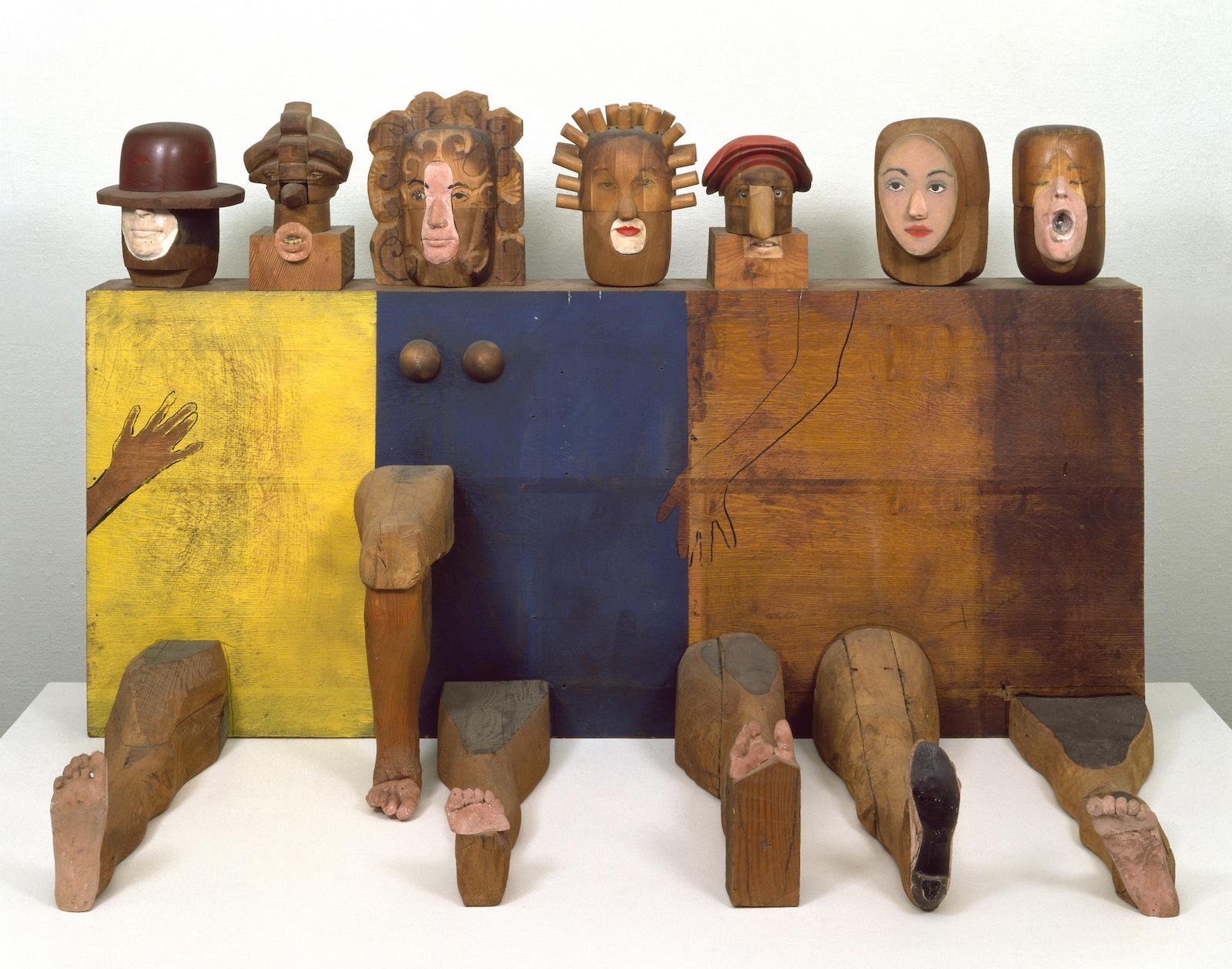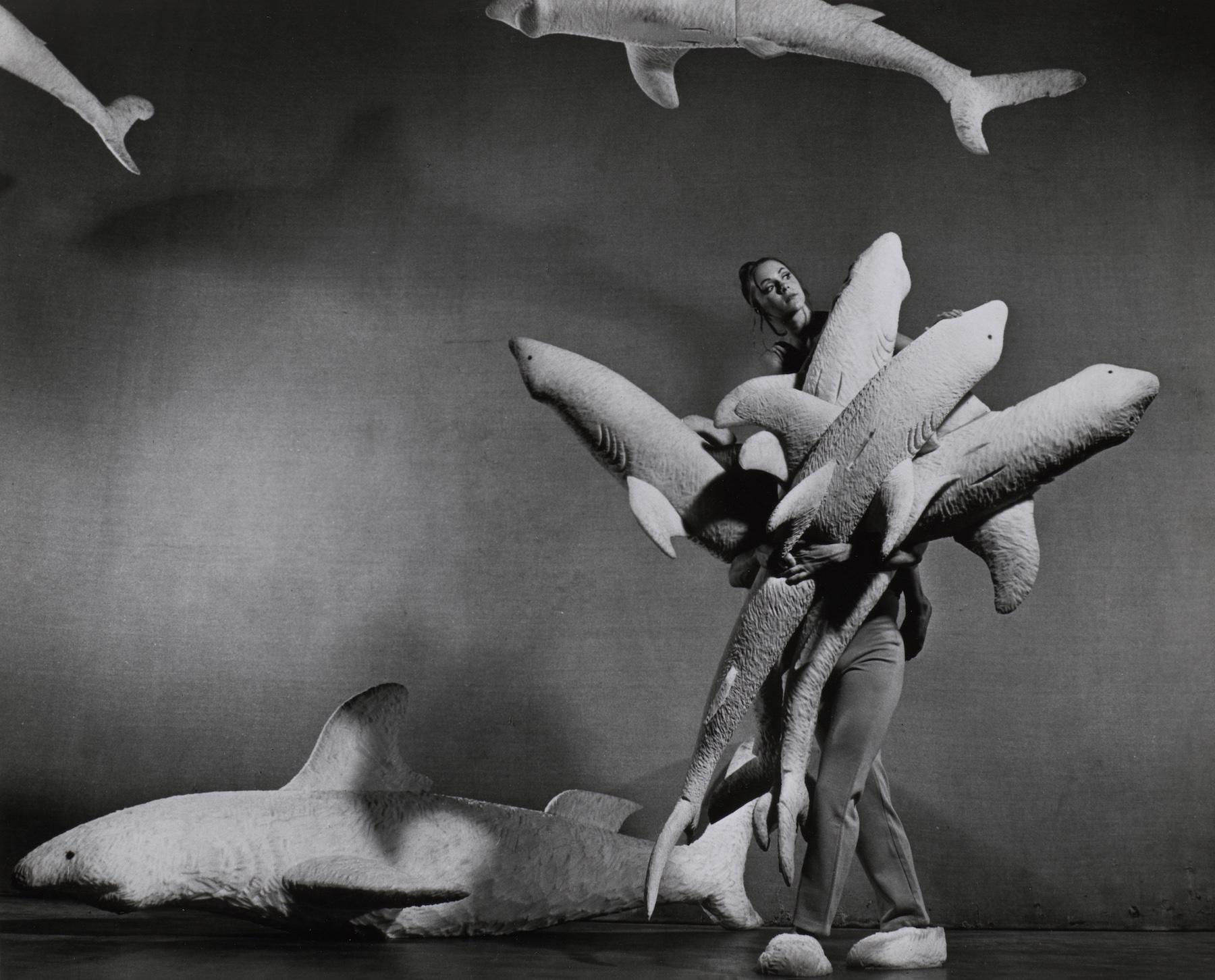Other major works from her critical Pop Art period that are part of the museum’s collection or on loan to the exhibition from private collectors and other institutions include Self-Portrait (1961-62), Baby Boy (1962-63), Baby Girl (1963), The Party (1965-66), and Kiss (1966).
Born in 1930 to wealthy Venezuelan parents in Paris, Marisol Escobar (she later dropped her surname to divest herself from a patronage identity and to stand out from other artists) moved to New York in 1950 and started making experimental artwork.
During this period, she hung out with the Abstract Expressionists at the Cedar Tavern and took art classes at the Art Students League, Hans Hofmann School of Fine Arts, New School for Social Research, Brooklyn Museum Art School, and several independently teaching artists. She made drawings and sculptures about the family, the immigrant experience, displacement, and the nature of the self.




